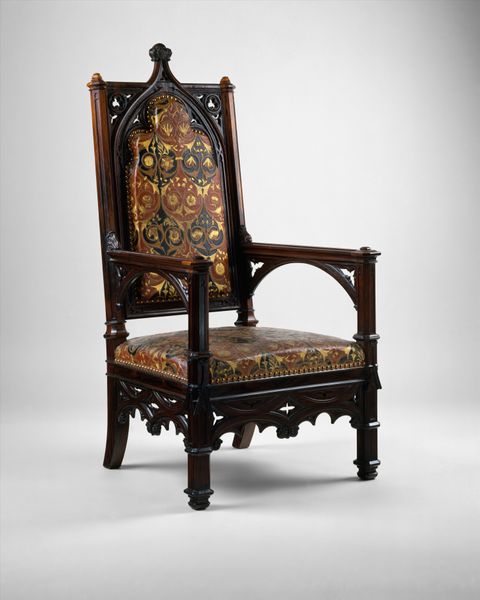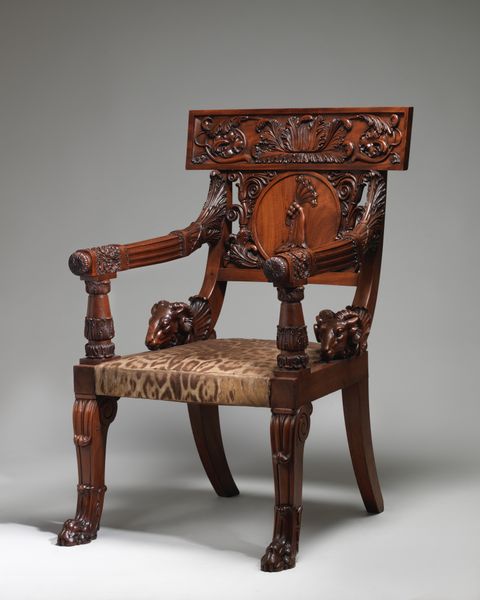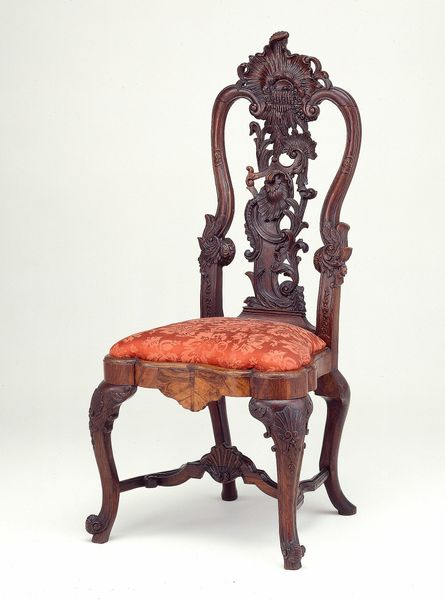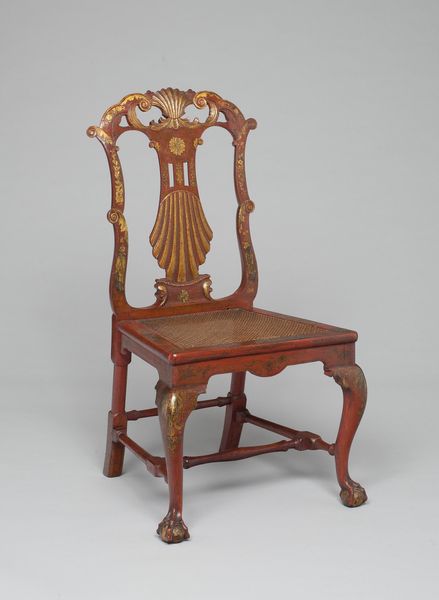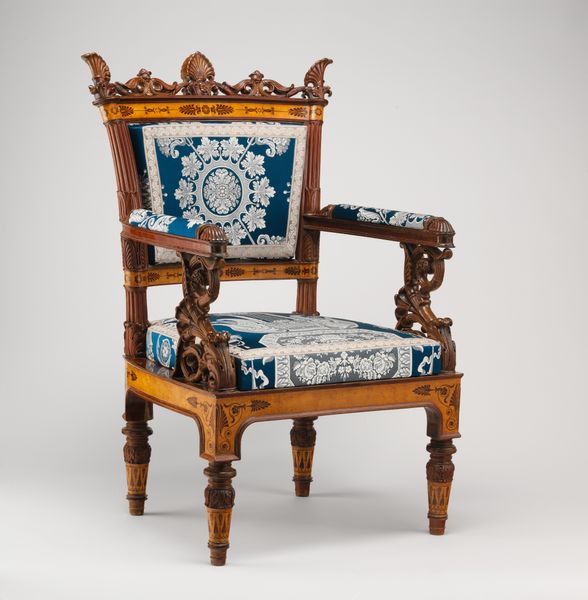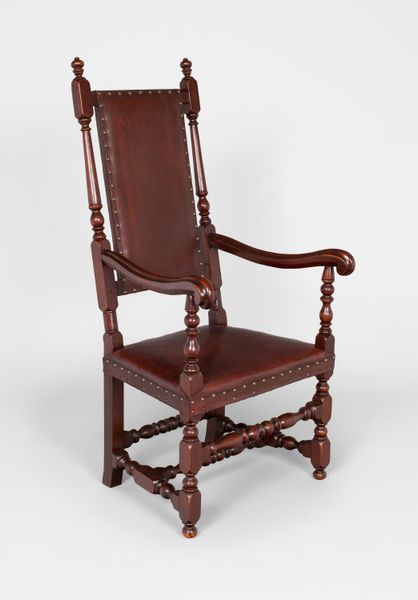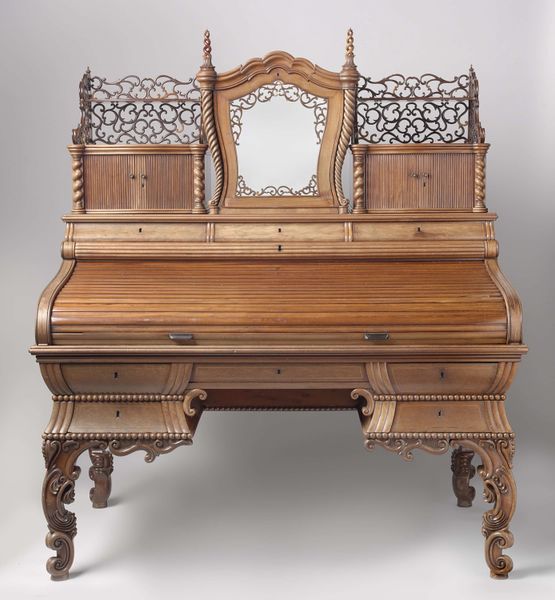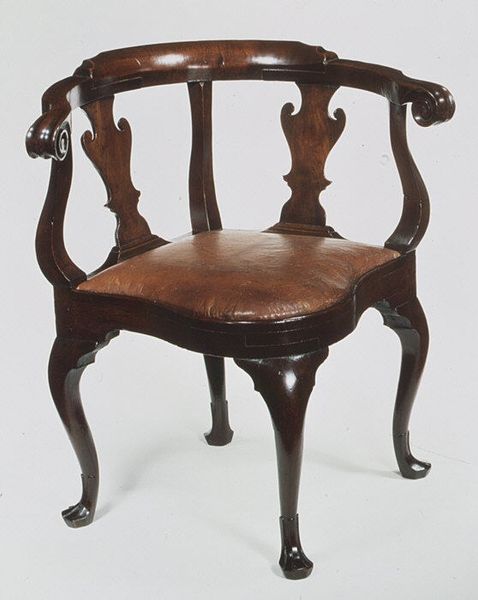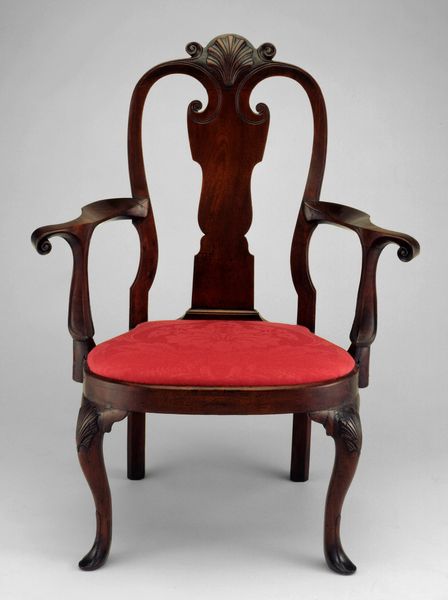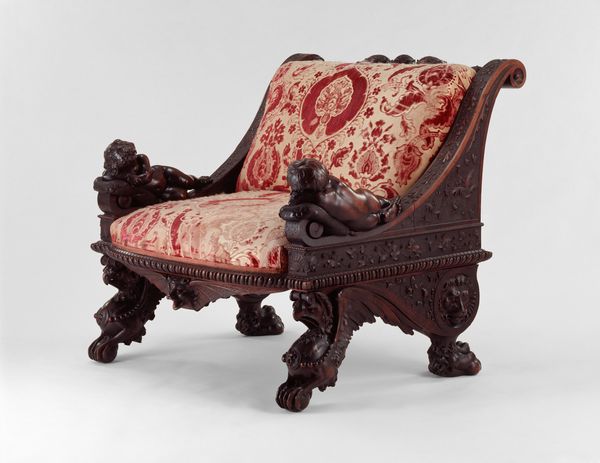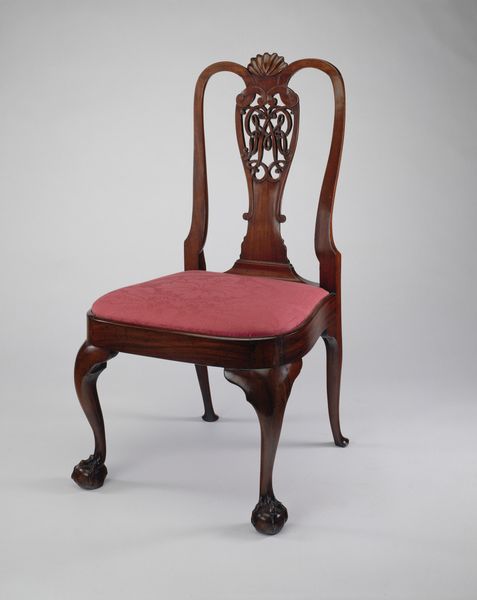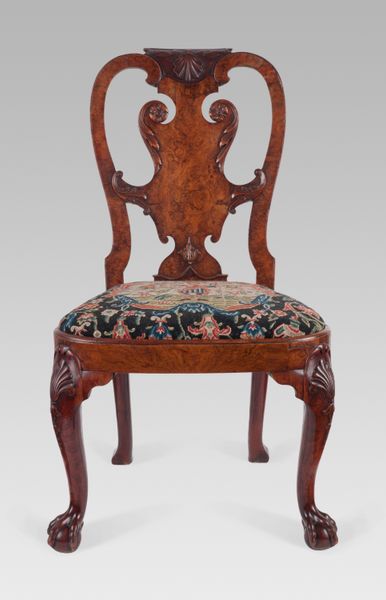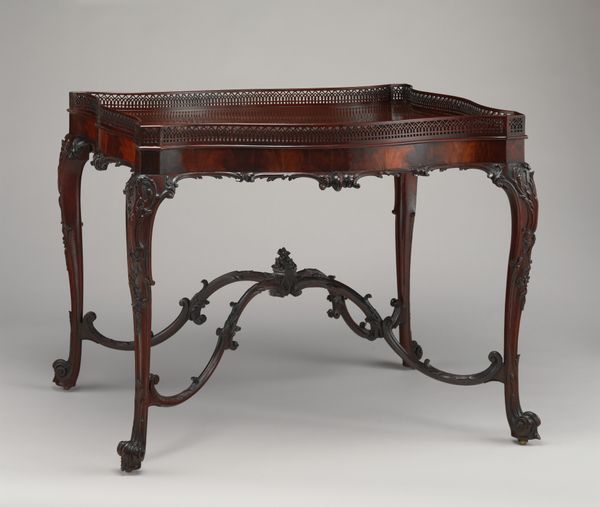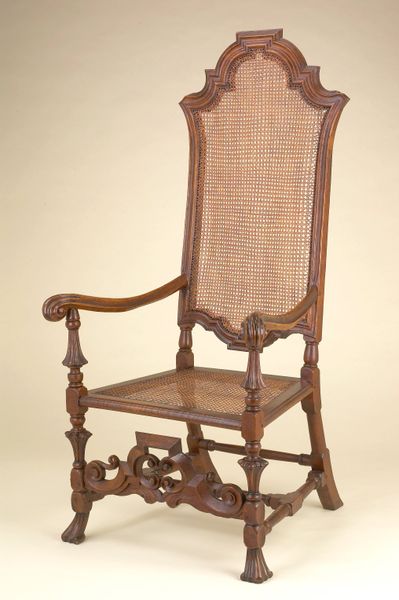
Dimensions: 65 9/16 x 58 x 24 1/2 in. (166.5 x 147.3 x 62.2 cm)
Copyright: Public Domain
Editor: Here we have an *Étagère*, crafted around 1850 by Julius Dessoir. It is a wooden sculpture and seems incredibly ornate, even overwrought, in its details. What do you notice about the piece's design? Curator: Formally, I note the exuberant and dynamic lines. Dessoir uses a relentlessly high degree of elaboration. How do these repetitive ornamental elements serve to advance, or perhaps undermine, the functionality of this object? Editor: Well, the repetition certainly establishes a rhythm and adds visual interest, but the shelves appear impractical. Does that level of embellishment distract from the object's purpose? Curator: Indeed. The heavy carving, while demonstrating skill, seems to challenge conventional notions of utility. This prompts one to consider its semiotic function. What symbolic meaning might reside in such intricate detail, its deployment across every visible surface? Is it merely decorative, or does it signify status and wealth through conspicuous consumption? Editor: It feels less about simple practicality and more about presenting status. I guess, in that way, it does seem appropriate for a formal reception area. Curator: Precisely. Dessoir emphasizes artistry over utility. Do you think the wood's texture adds or detracts from the sculpture's intended function? Editor: The wooden texture actually softens some of the harsher baroque elements. The natural grain keeps it from becoming completely overwhelming. Curator: Your analysis highlights an intriguing tension. Reflecting upon it, I realize I am swayed. Initially skeptical, I find myself reconsidering the piece. The craftsmanship now speaks to a profound command over material. Editor: I agree. Thanks to your insight, I can now appreciate it beyond its initial flamboyant appearance.
Comments
minneapolisinstituteofart about 2 years ago
⋮
This lavishly carved and decorated étagère was made by Julius Dessoir, a French émigré who came to America in the late 1840s and quickly established a thriving furniture-making business on Broadway, the most fashionable street for shopping in 19th-century New York City. Designed primarily for 19th-century parlors, rococo revival étagères, like this example, typically displayed vases of flowers, scientific specimens, and fine porcelain and marble, seen from the round on mirrored shelves. The Taylor family of St. Paul used this étagère in their parlor at 99 Mackubin Avenue. After daughter Maud Van Cortlandt Taylor married Louis W. Hill in 1901, the object made its way to their home at 260 Summit Avenue in St. Paul, next to the home of Louis' father, the railroad baron James J. Hill. Dessoir étagère in the Taylor parlor at 99 Mackubin Street, St. Paul, c. 1890Courtesy of a private collector
Join the conversation
Join millions of artists and users on Artera today and experience the ultimate creative platform.
